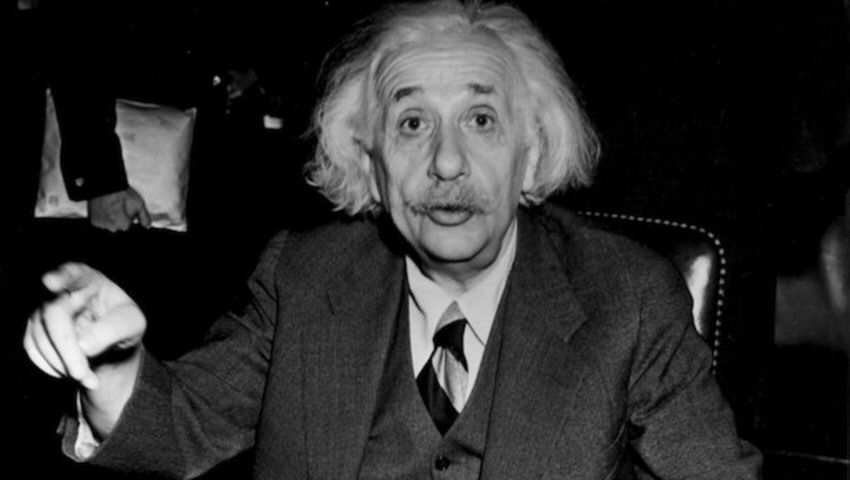
Einstein impacts the car market even today
At Desperateseller.co.uk, we recently came across the results of a (2018) survey which we found interesting. So we thought we'd share some of them with you. First, though, here's a question: you have five seconds to answer it. Ready? What is Albert Einstein famous for?
Now, the chances are that your (correct) answer was the Theory of Relativity. After all, it’s a fact that nearly everyone knows. In fact, almost 90% (89.1%) of (5,000) participants in the survey we’ve just mentioned gave the same answer to the same question. But that wasn’t the interesting bit of the survey. THIS was the interesting bit: 78% of that 90% admitted that they had no idea what the ToR actually says. They just knew that Einstein was famous for it. Also, of the few who did know what the ToR was about, only 4% could name one way in which it affects the world of motoring.
But it does. Affect the world of motoring, that is. And in quite a few - very significant - ways. Did you know, for example, that. . . but we’re getting ahead of ourselves. Just in case you’re one of those who are a bit hazy about the ToR, here’s a quick review of the basics.
Einstein first introduced ‘special relativity’ (as opposed to ‘general relativity’, which came later) in 1905. And one the most famous conclusions of the theory is that all observers, no matter what direction they’re going in, or their relative speeds, always see light traveling at the same speed (about 186,000 miles per second, call it ‘c’ for short). This leads to some unintuitive (to put it mildly) results. Thus, for example, let’s say that you’re quietly driving along at 35mph, in your Vauxhall Corsa. It’s getting a bit dark, so you switch your headlights on. As a result, the light waves shoot away from you at the speed c. Suddenly, you pass another driver, who’s doing 30mph in their Hyundai i30, and you decide to speed up to 70mph. Now, here’s the thing: as the light from your headlamps still heads away from you at c, the other driver must see it travelling away at c + 40mph. Right?
Wrong. To them, the light from your headlamps also travels away at c. In fact, even if the UK driving laws and your not-overly-quick Corsa allowed it, you could speed up a huge amount - to almost c - and the situation would be exactly the same: you’d both see the light travelling away at c. How is that possible? Well, without going into detail, it’s an effect known as time dilation: you and the other driver experience time passing at different rates, relative to each other. Hence the ‘theory of relativity’.
As you might imagine, a full explanation of this would take a while. So we hope you'll just take our word for it, and perhaps Google it for more information. In the meantime, here are three ways in which the ToR impacts the world of motoring.
Sat Navs
To get the pinpoint accuracy we’re used to, satellites use clocks that are accurate to a few billionths of a second (nanoseconds). Since each satellite is about 12,000 miles above Earth and moves at about 6,000 miles per hour, there's a relativistic time dilation that tacks on about 4 microseconds each day. Add in the effects of gravity and the figure goes up to about 7 microseconds (which is 7,000 nanoseconds). And the difference it makes is very real: if relativity wasn’t accounted for, a GPS unit that tells you it's a half mile to the next fuel station would be 5 miles off after only one day!
Batteries
The fact that many cars start at all, can be explained by Einstein’s ToR. That’s because about 85% of the voltage developed by a lead-acid car battery is due to relativistic effects. Why? Well, typically, electrons orbit their atoms at speeds much less than the speed of light, so relativistic effects can largely be ignored. But in heavy atoms, such as lead, the large positive charge of the massive nuclei means that electrons have to move at much higher speeds to stay in orbit. This means (as predicted by the ToR) that their mass increases, resulting in a shift in electronic energy levels and, therefore, higher voltage.
Radar guns
If you’ve ever received a speeding ticket from a traffic trap, you can thank Einstein. That’s because light is a wave, and all waves exhibit the Doppler effect. You’ll probably be familiar with the soundwave version of this - when a vehicle with a siren passes you, its pitch rises as it approaches, and falls as it recedes. This is a result of the fact that the frequency of a sound (or any) wave changes as it’s emitted from a moving object. This explains how radar guns work - police scanners emit infrared waves that reflect from a car and then measure the frequency change due to the vehicle’s motion. Using Einstein’s ToR, based on the unchanging value of the speed of light, this frequency change can be used to calculate the speed of the car concerned – even if the cop car is moving too.
Anyway, we’ll leave it there for now. If your brain isn’t too frazzled by all this talk of Einsteinian physics, you might want to take a look at our used cars section. It’s a great way to relax! Einstein, by the way, couldn’t drive.













